Intrusion detectors
The passive infrared (PIR) motion detector is one of the most common sensors found in household and small business environments. It offers affordable and reliable functionality. The term passive refers to the fact that the detector does not generate or radiate its own energy; it works entirely by detecting the heat energy given off by other objects.
Strictly speaking, PIR sensors do not detect motion; rather, they detect abrupt changes in temperature at a given point. As an intruder walks in front of the sensor, the temperature at that point will rise from room temperature to body temperature, and then back again. This quick change triggers the detection.
PIR sensors may be designed to be wall- or ceiling-mounted, and come in various fields of view, from narrow-point detectors to 360-degree fields. PIRs require a power supply in addition to the detection signalling circuit.
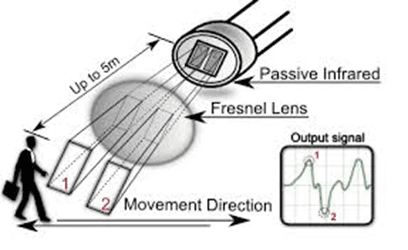
Motion sensors can:
For some parking meters
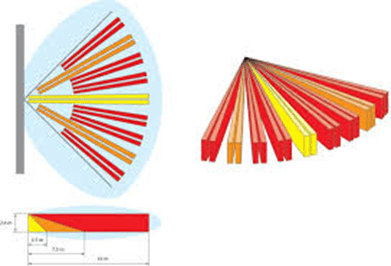
Passive Infrared (PIR)
Detects body heat (infrared energy). Passive infrared sensors are the most widely used motion in home security systems. When your system is armed, your motion sensors are activated. Once the sensor warms up, it can detect heat and movement in the surrounding areas, creating a protective “grid.” If a moving object blocks too many grid zones and the infrared energy levels change rapidly, the sensors are tripped.
Microwave (MW)
Sends out microwave pulses and measures the reflection off a moving object. They cover a larger area than infrared sensors, but they are vulnerable to electrical interference and are more expensive.
Dual Technology Motion Sensors
Motion sensors can have combined features in an attempt to reduce false alarms. For example, a passive infrared (PIR) sensor could be combined with a microwave sensor. Since each operates in different areas of the spectrum, and one is passive and one is active, Dual Technology motion sensors are not as likely as other types to cause false alarms, because in order for the alarm to be triggered, both sensors have to be tripped. However, this does not mean that they never cause false alarms.
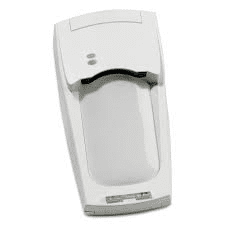
Area Reflective Type
Emits infrared rays from an LED. Using the reflection of those rays, the sensor measures the distance to the person or object and detects if the object is within the designated area.
Ultrasonic
Measures the reflection off a moving object and sends out pulses of ultrasonic waves.
Vibration
These can be purchased or easily made at home. Detects vibration. A homemade vibration sensor uses a small mass on a lever, which is activated by a switch to an alarm when it vibrates. Homemade motion sensors can work, but they can also be unreliable
Wireless Motion Sensors
Today, most motion sensors are wireless. Wireless sensors are very easy to set up. They do not require drilling, and they communicate with the other security system components wirelessly.
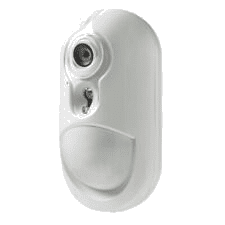
Pet Immune Motion Sensors
A passive infrared sensor can be set up to ignore animals up to a certain weight. A dual technology motion sensor is more resistant to false alarms caused by animals because it requires two sensors to be triggered in a manner determined by the manufacturer. They can be set up to ignore a large animal or multiple small animals without setting off a false alarm. Some pet immune motion sensors have a sensitivity level that can be adjusted for families with very active animals.

Video Motion Sensors
Combines video cameras with advanced signal processing. Some recordable motion sensors start recording when they sense motion. Cameras controlled by motion sensors can save you memory storage by not recording hundreds of hours of useless footage—they only capture the important stuff. circuit
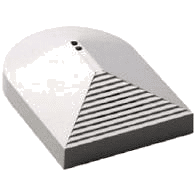
Best Practices for Mounting Sensors
Keep in mind that motion sensors aren’t error-proof, and there are instances in which there could be false alarms. False alarms are usually caused by electrical failures, user error, poor application engineering, power surges, lightning, and faulty equipment. They can also be triggered by animals, insects, and foliage.
The best thing you can do to increase the effectiveness of your sensors and prevent false alarms is to read the instructions that come with your sensors. Also, consider the following motion sensor placement tips:
Keep PIR sensors 2-4mtrs away from heating vents, where the sunlight shines in, and radiators. If a motion sensor detects a swift change in heat, even that of a cloud passing quickly over direct sunlight shining into your living room, it could be tripped.
Place motion sensors at “choke-points”—areas where people have to walk through, like the stairwell or main hallway. That way, an intruder will trip the sensor regardless of where they are headed. Intruders usually go right for the master bedroom, so put a sensor near that room or other rooms where you have valuables, like the study.

Best Practices for Mounting Sensors
Assess where intruders are most likely to enter, and what path they would take. Keep in mind that most motion sensors can detect between 15 and 25 meters. Most burglars enter the home through a front or back door, patio door, or garage door, so it’s advisable to place the sensors near those areas.
Find walls that an intruder would walk alongside, like a hallway or narrow pathway that leads to a room.Motion sensors work best when the intruder walks parallel to the sensor, not toward it. For example, in a hallway you tend to walk parallel to the walls, not directly toward them.
Consider the Size of Your Pets
Pet immune motion sensors are only immune to pets when used correctly, and even then they can create false alarms under certain conditions. Many pet immune sensors are rated by an animal’s weight, but in reality, they’re based on height. If your pet likes to practice their high jump, it can set off false alarms.
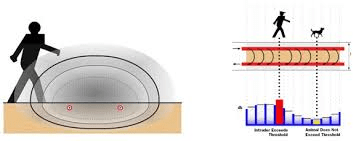
Best Practices for Mounting Sensors
Don’t Block the Infrared
Motion sensors are like flashlights sending out a beam of light, but with motion-detecting infrared energy waves instead of light waves. Just like a light is brighter closer to the bulb, the infrared radiation is denser nearer to the device and it spreads out the farther away you get.
A motion detector’s waves can’t penetrate through walls or other hard objects like furniture. When you’re setting up your motion sensor, imagine it like a light on the wall. Anything that creates a shadow from light in that position can also block the motion sensor’s ability to cover the shadowed area.
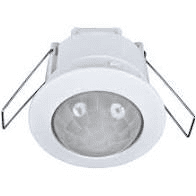

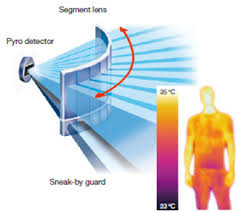
Reed Switches
The hermetically sealed reed switch is a very common type of two piece sensor that operates with an electrically conductive reed switch that is either normally open or normally closed when under the influence of a magnetic field as in the case of proximity to the second piece which contains a magnet.
When the magnet is moved away from the reed switch, the reed switch either closes or opens, again based on whether or not the design is normally open or normally closed.
This action coupled with an electric current (typically at 12V DC) allows an alarm control panel to detect a fault on that zone or circuit.
These type of sensors are very common and are found either wired directly to an alarm control panel, or they can typically be found in wireless door or window contacts as sub-components.
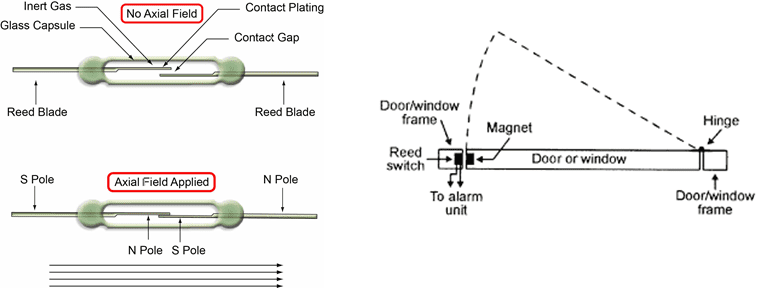
Photoelectric beams
Photoelectric beam system detect the presence of an intruder by transmitting visible or infrared light beams across an area, where these beams may be obstructed.
To improve the detection surface area, the beams are often employed in stacks of two or more.
However, if an intruder is aware of the technology's presence, it can be avoided. The technology can be an effective long-range detection system, if installed in stacks of three or more where the transmitters and receivers are staggered to create a fence-like barrier.
Systems are available for both internal and external applications.
To prevent a clandestine attack using a secondary light source being used to hold the detector in a sealed condition whilst an intruder passes through, most systems use and detect a modulated light source.
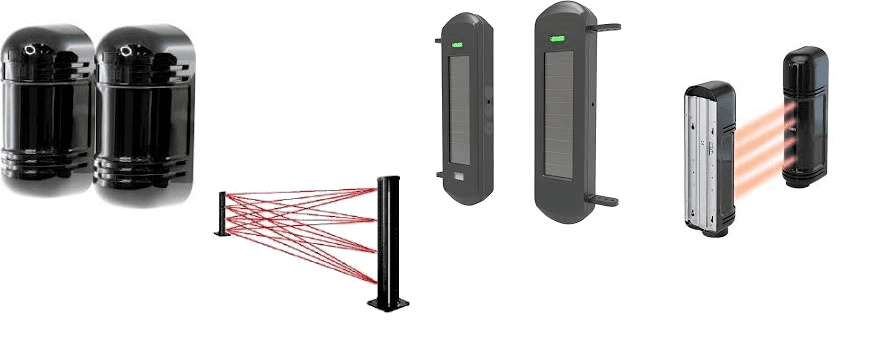
Glass-break detection
The glass-break detector may be used for internal perimeter building protection. Glass-break acoustic detectors are mounted in close proximity to the glass panes and listen for sound frequencies associated with glass breaking.
Seismic glass-break detectors, generally referred to as shock sensors, are different in that they are installed on the glass pane. When glass breaks it produces specific shock frequencies which travel through the glass and often through the window frame and the surrounding walls and ceiling. Typically, the most intense frequencies generated are between 3 and 5 kHz, depending on the type of glass and the presence of a plastic interlayer. Seismic glass-break detectors feel these shock frequencies and in turn generate an alarm condition.
Window foil is a less sophisticated, mostly outdated detection method that involves gluing a thin strip of conducting foil on the inside of the glass and putting low-power electric current through it. Breaking the glass is practically guaranteed to tear the foil and break the circuit.
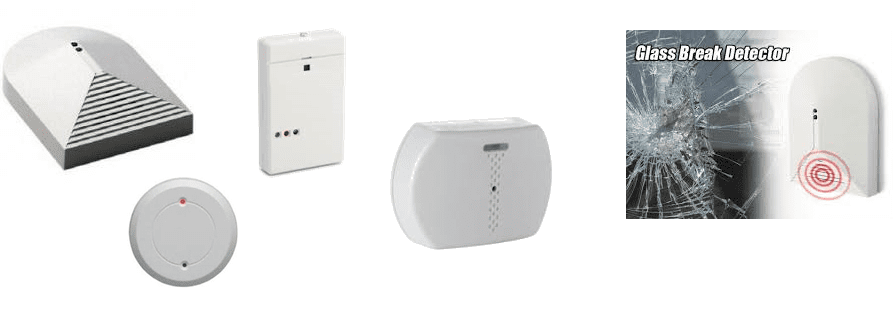
Smoke, heat, and carbon monoxide detectors
Most systems may also be equipped with smoke, heat, and/or carbon monoxide detectors. These are also known as 24-hour zones (which are on at all times). Smoke and heat detectors protect from the risk of fire using different detection methods. Carbon monoxide detectors help protect from the risk of carbon monoxide poisoning. Although an intruder alarm panel may also have these detectors connected, it may not meet all the local fire code requirements of a fire alarm system.
Traditional smoke detectors are technically ionisation smoke detectors which create an electric current between two metal plates, which sound an alarm when disrupted by smoke entering the chamber. Ionisation smoke alarms can quickly detect the small amounts of smoke produced by fast-flaming fires, such as cooking fires or those fueled by paper or flammable liquids. A newer, and perhaps safer, type is a photoelectric smoke detector. It contains a light source in a light-sensitive electric sensor, which is positioned at a 90-degree angles to the sensor. Normally, light from the light source shoots straight across and misses the sensor. When smoke enters the chamber, it scatters the light, which then hits the sensor and triggers the alarm. Photoelectric smoke detectors typically respond faster to a fire in its early, smoldering stage – before the source of the fire bursts into flames.

Driveway Sensors
Driveway alarm systems can be tied into most security and automation systems.
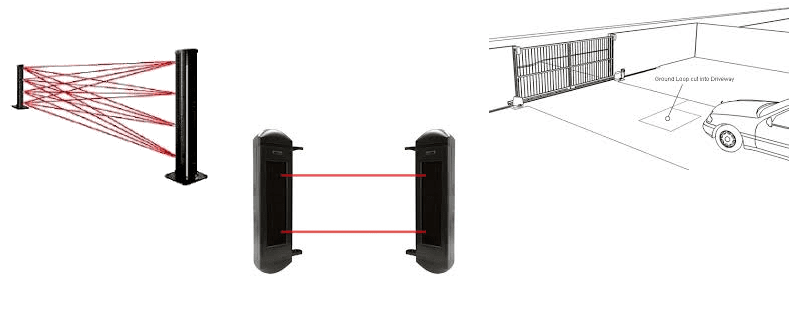
Passive magnetic field detection

Microwave barriers

Microphonic systems

Security electric fence

